How often do you see a bright star falling in the night sky and asking for a wish? It’s a great scenario and can be a lucky day or night for individuals, especially those in the cities. However, the illuminated object is not a fallen star. Still, it can bring smiles to people’s faces and charge up their moods since it’s not easy to view shooting stars at night without looking endlessly at the limitless universe. Nevertheless, the night sky can reward those looking at the right place and at the right time.
The Perseid Meteor Shower is one occasion where people can witness the remarkable light from the meteors igniting the night sky. Over the decades, people have developed tools and technologies to notice outer space. However, one may not need a Hubble telescope on their rooftops; instead, one can see the bright meteors with the naked eye. All you need is a calming high space (probably far from the city’s light pollution), maybe friends and align yourself just below the zenith. And that’s how you can capture the essence of the night, an event once a year—the Perseid meteor shower.
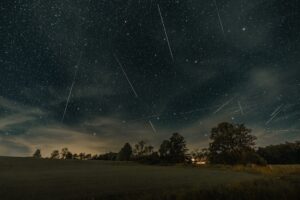
A Blessing Of The Night: Perseid Meteor Shower
A meteor shower is a terminology used in astronomy that represents the visibility of multiple meteors simultaneously at a specific time (with the same orbit). Usually, the meteors are the leftovers from the large comets, which further get ionised upon interaction with Earth’s atmosphere. Most meteors are almost inches in size and do not reach the surface of the Earth.
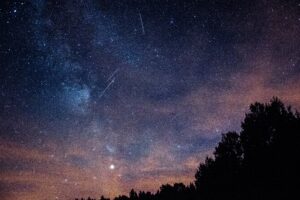
The Perseid meteors are the same and are visible in the night sky between 12 and 14th of August of every year. However, they can be observed until the month’s end, but the frequency and numbers can be pretty low. Moreover, the peak time to view these meteors is between midnight and dawn. So, if you’re an astrophile or even a remote space enthusiast, you should not waste an opportunity to view these spectacles of the night.
- Past(2022): 13th August
- Present(2023): 12th August
- Future(2024): 11-13th August
Origin Of The Perseid Name
From the beginning, astronomy had a great way to name things and newly discovered objects. Well, meteor showers are not any different. The Perseid name comes from the Greek hero or demigod, ‘Perseus’, who founded the Perseid dynasty. But how come a meteor shower has any relation to Perseus? The answer is that one can see these meteors coming from the direction of the constellation Perseus. And that’s why they are named after the Greek myth.
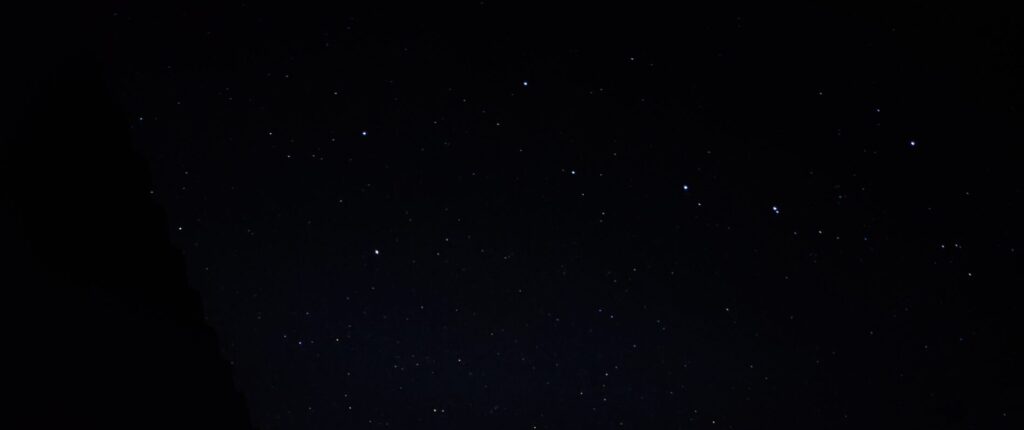
Not only that, some other meteor showers like Orionoids, Geminids, Lyrids, and Leonids are named after their respective constellation. Again, it makes a good name and helps astronomers, photographers, and viewers understand where to look in the sky. Luckily, if you can see the constellation Perseus on your horizon, you can quickly get the sights of meteors in August. However, if you’re new to astronomy and stargazing, numerous mobile phone apps can give you a more precise idea about the location of celestial objects at night.
Seeing The Mirfak
One way to view the heavenly show, known as the Perseid meteor shower, is to look at the brightest star in the Perseus constellation—Mirfak. It has one of the most visible aura at night, and during the shower peak, all you need to do is keep an eye on Mirfak. However, aligning your gaze at least 30 to 40 degrees can be great if the star is above the horizon.
Right Place, Right Time
After locating the Mirfak in Perseus, one needs to get to a remote place away from the city lights because they are the largest source of pollution. Understandably, people in the city can not view these objects from their rooftops but can still get at least 10-15 km from the area to witness the meteor showers. Again, one should get their hopes too high because other factors like moonlight, clouds and haze can affect the visibility of celestial objects at night.
Patience Is The Key
After finding a remote and high place, a person must patiently wait for the meteors to pass through. It can take an hour to view your first meteor, and even though different studies indicate the high frequency of meteors, it’s not always the case. Therefore, bringing some objects like goggles and star trackers is advisable to get a view of something on the horizon.
Lastly, a person is most likely to find success during dawn in the case of the Perseid meteor shower in the northern hemisphere. In the case of the southern hemisphere, things are different, and it might not be possible to view these meteors properly, especially in cities.
Looking For Perseid Meteor Showers And Finding Other Celestial Objects
But people should keep hope as many other things in space are worth sight and your time. One can find many different planets like Mars, Jupiter and Neptune, while different constellations like Ursa Major, Perseus and Leo can also be tracked. So, in search of small meteors, one can get their eyes on the much bigger spectacles of the night sky. And it’s not only that astronomers and astrophotographers find the night sky amusing. When people try to find their place among the stars, an invisible bond is formed—beyond boundaries and perimeters.
Science Behind Meteor Showers
Meteor showers describe the large number of meteors coming from the same trajectory or orbit at a frequency much larger than the normal ones. These particles, dust or small elements, go into the earth’s orbit due to gravity and get ionised in the atmosphere. Upon ionisation, they are vaporised, and we can only see the light as a trail that lasts for a second.
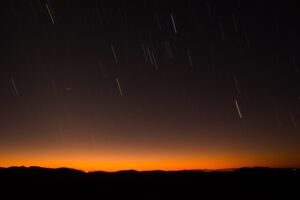
However, in some cases, people observed light for more than two or three seconds. Well, that can be the further ionisation of the air. But in most cases, one can only a spark trail for even less than a second. The larger the frequency of the meteors, the larger the hourly rate, but this number can mislead the general gazer, as one can expect five meteors in one minute if the hourly rate is 300.
Please remember that the meteors are random and do not fall in the probability bracket, so I hope you are lucky on the night.
Comets: The Source Of Meteors
Meteors are tiny particles roaming the orbits of larger celestial objects like comets. Comets are immense structures of ice, dust particles and gas that orbit the sun. Our solar system has numerous comets; some are spotted during their close passage. One of the most famous examples is Haley’s comet, which was seen in 1986 and will again be spotted around 2061.
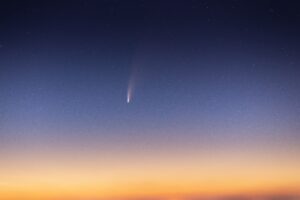
Meteors Vs Meteorites
People sometimes think that the shooting stars reach Earth’s ground, but it’s the opposite in the case of meteors. They don’t reach the Earth’s surface most of the time, and when they come, they are termed meteorites. Over the year, hundreds of thousands of meteors will ionise our sky; meanwhile, those who reach the surface will become part of the Earth. So, be ready to look out for them; maybe one can land at your doorstep!
Asterism And Constellations
Meteor showers derive their names from the constellation around which they are seen, but some showers can be spotted using asterism. The arrangement of three or more stars to form a recognisable structure is called asterism. Two of the most famous examples are Little and Big Dipper. Since the amount of stars in constellations is much higher, constellations can be easier to track, but it’s all up to your astronomical expertise.
Contribution To The Scientific Community
Being an astronomer or star observer can benefit the scientific community as hundreds of enthusiasts can report their data to famous institutes. It’s a great way to enjoy the meteor showers and report their numbers to science so that we can learn more about them. Our ancestors were some of the most brilliant sky observers ever to live, and today, we have lost touch with that spirit. We need to come together and participate in celebrating the universe above us to learn more about it.
How To Make Star And Meteor Gazing The Best Time?
For an enthusiast, star gazing can be the most pleasing activity, but it can be tedious for newcomers. Trust me, I have spent an hour without seeing a meteor on a cold December night with pain in my neck. So, it’s important to keep patience and look at the places. For starters, knowing more about space and astronomy can be good. Secondly, investing in some mobile apps and instruments can facilitate your exploration. Besides that, find people like you and enjoy the sky show with a lovely chat.
For Lone Introverts
If you don’t want company under the blanket of sky, then you must keep a sharp eye on the sky. However, avoid alcohol, as it will drastically impact your night vision. Other than that, listen to some music, sit at a suitable angle, and you’re ready.
With Group Of Friends
A group of friends can enjoy the meteor shower but should avoid cell phones because the blue light from those devices can hinder your vision. That’s why professionals use red lights when making notes or something.
Witness The Wonder At Least Once In Your Life
Being a novice astronomical enthusiast, I only want to say one thing: looking at stars gives a great feeling. And even though one doesn’t believe in fairy tales, the shooting meteor can make anyone say, ‘What should I wish?’ So, just once in your life, try to see a meteor shower because it will change your perspective on life, and maybe you’ll find peace.
Frequently Ask Questions (FAQs)
What is the best time to see the Perseid meteor shower?
The best time to see the Perseid meteor shower is midnight and early dawn.
Is the Perseid meteor shower visible in India?
Yes, the Perseid meteor shower and several others are visible in India.
How rare is the Perseid meteor shower?
Perseid shower occurs once every year in the middle of August.
Can you photograph the Perseid meteor?
Photographing meteors in the night sky using cameras and other equipment is possible.
Where is the Perseid meteor shower best seen?
The Perseid meteor shower is best seen in the Northern Hemisphere.

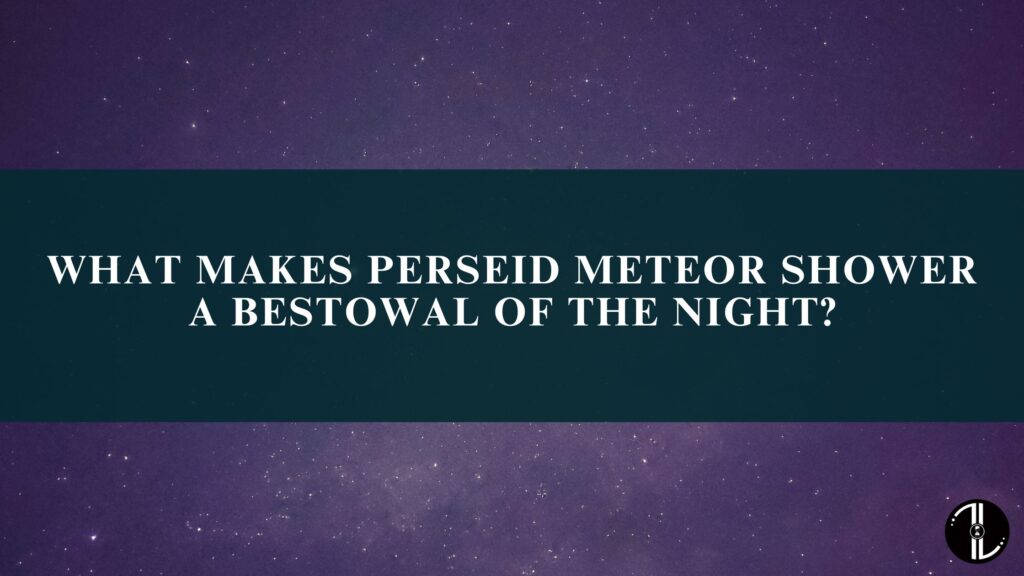
Pingback: Startling Orionids Meteor Shower Seen In October Month
Pingback: Life Through Geminid Meteor Shower Peak In The December
Pingback: The Last Astronomical Event Of 2023: Ursid Meteor Shower
Pingback: Top 3 Astronomical Phenomenon In August 2024